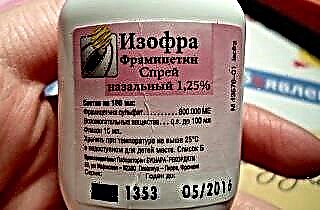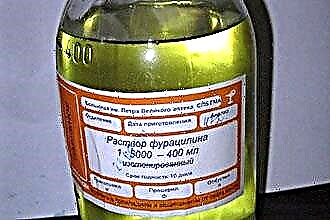Health during pregnancy should be monitored especially carefully. And not only because an infection that has entered the body can harm an unborn baby. The fact is that most of the traditional medicines are strongly discouraged during pregnancy. But staying in isolation for all nine months will not work, and it is very easy to catch an infection transmitted by airborne droplets. So what to do if it was not possible to prevent the disease? And how to treat green snot during pregnancy?
Where does the green runny nose come from?
 A runny nose in a pregnant woman can also occur for non-infectious reasons. Therefore, if snot appears, you should not be very upset and immediately grab onto medications. Moreover, it is also necessary to treat different types of snot in different ways, depending on the reasons for their appearance. So where does a runny nose come from?
A runny nose in a pregnant woman can also occur for non-infectious reasons. Therefore, if snot appears, you should not be very upset and immediately grab onto medications. Moreover, it is also necessary to treat different types of snot in different ways, depending on the reasons for their appearance. So where does a runny nose come from?
- Often, hormonal changes in the body of the expectant mother lead to the fact that the mucous membranes begin to produce more secretions. And then from the nose at times transparent discharge similar to snot flows. When the hormonal background stabilizes, they go away on their own and there is no need to treat them.
- They may have snot and an allergic nature, even if there was no tendency to allergies before. This is all due to the same hormones and increased sensitivity of pregnant women to external stimuli. There is no point in treating such snot - they will still appear from time to time. If they flow too intensely, then antihistamines can be used.
- Snot of an infectious nature is formed as a protective reaction of the body to pathogenic microflora. Viruses and bacteria, entering the body, activate the immune system. And if it is weakened and does not cope, the disease continues to develop and penetrates deep into the respiratory tract. It causes not only inconvenience, but can also harm the baby, so such snot should be treated immediately.
Transparent snot is in principle safe. They are only a signal of certain changes that have occurred in the body. But if they do not go away in 1-2 days, their color and consistency change, especially when they acquire a green color - it is better not to self-medicate, but to go to the doctor.
The green color of the snot indicates that the runny nose is of a bacterial nature. This shade is given to it by dead neutrophils, which attacked the pathogenic bacteria. In fact, this is a purulent discharge. They make breathing difficult and poison the body of a pregnant woman.
Traditional treatment
 Usually, green snot disappears quickly enough from the use of antibiotic nasal drops. But most of them are not prescribed during pregnancy, especially in the early stages, when the child is not yet protected by the placenta and everything that enters the mother's bloodstream also affects him.
Usually, green snot disappears quickly enough from the use of antibiotic nasal drops. But most of them are not prescribed during pregnancy, especially in the early stages, when the child is not yet protected by the placenta and everything that enters the mother's bloodstream also affects him.
That is why you cannot prescribe treatment yourself. Even such seemingly harmless drugs, like ordinary nasal drops, can cause, if used incorrectly, a complicated course of pregnancy and pathology of fetal development. It is possible to treat green snot for pregnant women only with those remedies that the doctor recommends.
Many people mistakenly believe that if vasoconstrictor drugs do not contain antibacterial components, then they are safe and can be used to stop the flow of snot and make breathing easier. Also only on the recommendation of a doctor!
Such drops cause vasoconstriction not only in the nose, but also in other organs, including the placenta, reducing the flow of oxygen to the fetus. Therefore, these drugs are just dangerous at a later date - in the 2-3 trimester.
So how, then, can green snot be treated for pregnant women? Below is a list of drugs, the use of which is allowed, but once again we strongly recommend not to use them without first consulting a doctor:
 "Fugentin" - contains the antibiotic gentamicin and practically does not enter the bloodstream, therefore, even in the official instructions for topical application, pregnancy is not a contraindication. Able to quickly cure respiratory infectious diseases. It can be used for pregnant women only as directed and under the supervision of a physician.
"Fugentin" - contains the antibiotic gentamicin and practically does not enter the bloodstream, therefore, even in the official instructions for topical application, pregnancy is not a contraindication. Able to quickly cure respiratory infectious diseases. It can be used for pregnant women only as directed and under the supervision of a physician.- "Bioparox" is one of the most effective drugs that contains the antibiotic fusafungin and allows you to very quickly cure ARVI and green snot. It is produced in the form of an aerosol and is not absorbed into the mucous membranes, due to which it is relatively safe even during pregnancy. Remaining on the surface of the respiratory tract for a long time, it blocks the spread of infection, while simultaneously destroying pathogenic microorganisms. Use no longer than 3-4 days, as the drug weakens the immune system.
 "Isofra" - contains a broad spectrum antibiotic framycetin. The drug is so strong that it can even treat sinusitis. It acts locally, but in case of an overdose, it has a negative effect on the development of the fetus. If a pregnant woman has a weakened immune system, it can provoke thrush. It is used no longer than 10 days and only as directed by a doctor.
"Isofra" - contains a broad spectrum antibiotic framycetin. The drug is so strong that it can even treat sinusitis. It acts locally, but in case of an overdose, it has a negative effect on the development of the fetus. If a pregnant woman has a weakened immune system, it can provoke thrush. It is used no longer than 10 days and only as directed by a doctor.- Polydexa contains the antibiotic neomycin and is effective against most microorganisms. Quickly removes green snot, nasal congestion, inflammation and swelling of the mucous membranes. Officially, its use during pregnancy is prohibited, but doctors prescribe the drug in cases where other methods of treatment do not help, and the period is more than 12 weeks. With prolonged use, it negatively affects the development of the hearing organs in the fetus.
A natural pharmaceutical preparation based on essential oils "Pinosol" gives a good therapeutic effect. It has strong anti-inflammatory properties, makes breathing easier and reduces the amount of discharge. But if the green snot is too thick and has an unpleasant odor, then, most likely, this medicine will be powerless.
Folk remedies
The safest during pregnancy are proven folk remedies, the simplest of which is rinsing the nose with a solution of sea salt. A teaspoon is enough for a glass of clean water. But before the procedure, it is necessary to clean the nose well so that the snot does not fall into the Eustachian tube under the pressure of water and does not cause otitis media. You can rinse up to 5 times a day. To enhance the effect, it is good to add a few drops of iodine to the solution. Also rinse the nose with a solution of furacilin, potassium permanganate or a decoction of chamomile.
But rinsing alone is not enough, you also need to prepare drops with anti-inflammatory and antibacterial effect. There are several ways to do this:
 Squeeze out some juice from onions or garlic, mix with the same amount of honey and drip 2-3 drops 3-4 times a day. The mixture burns, but it helps a lot.
Squeeze out some juice from onions or garlic, mix with the same amount of honey and drip 2-3 drops 3-4 times a day. The mixture burns, but it helps a lot.- Kalanchoe juice (with or without honey) is an excellent remedy to clear a stuffy nose. It slightly irritates the mucous membranes and causes sneezing. Do not use with increased uterine tone!
- Eucalyptus drops (they have a very powerful antibacterial effect!) Can be prepared by adding 2-3 drops of eucalyptus essential oil to a teaspoon of sea buckthorn, linseed or regular sunflower.
Important! You can also use other oils: mint, calendula, pine, fir. Tuyevo, juniper and St. John's wort are contraindicated during pregnancy.
Warm baths for hands (not for feet !!!) also help to relieve nasal congestion. You can use Zvezda balm or its analogs on mint, menthol, eucalyptus oils on the nasal area.
But all these methods help only when the disease is not started, and green snot has just appeared.If such a runny nose lasts longer than 3-4 days, there is no point in treating it further on your own, medical help is needed.

 "Fugentin" - contains the antibiotic gentamicin and practically does not enter the bloodstream, therefore, even in the official instructions for topical application, pregnancy is not a contraindication. Able to quickly cure respiratory infectious diseases. It can be used for pregnant women only as directed and under the supervision of a physician.
"Fugentin" - contains the antibiotic gentamicin and practically does not enter the bloodstream, therefore, even in the official instructions for topical application, pregnancy is not a contraindication. Able to quickly cure respiratory infectious diseases. It can be used for pregnant women only as directed and under the supervision of a physician. "Isofra" - contains a broad spectrum antibiotic framycetin. The drug is so strong that it can even treat sinusitis. It acts locally, but in case of an overdose, it has a negative effect on the development of the fetus. If a pregnant woman has a weakened immune system, it can provoke thrush. It is used no longer than 10 days and only as directed by a doctor.
"Isofra" - contains a broad spectrum antibiotic framycetin. The drug is so strong that it can even treat sinusitis. It acts locally, but in case of an overdose, it has a negative effect on the development of the fetus. If a pregnant woman has a weakened immune system, it can provoke thrush. It is used no longer than 10 days and only as directed by a doctor. Squeeze out some juice from onions or garlic, mix with the same amount of honey and drip 2-3 drops 3-4 times a day. The mixture burns, but it helps a lot.
Squeeze out some juice from onions or garlic, mix with the same amount of honey and drip 2-3 drops 3-4 times a day. The mixture burns, but it helps a lot.

